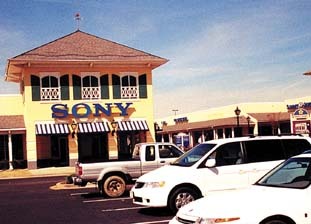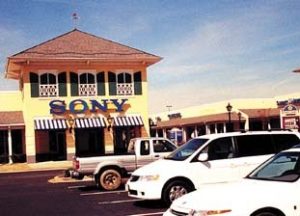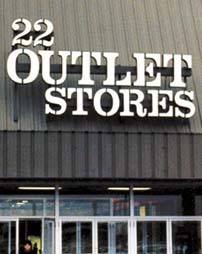As we continue setting up electric-sign capabilities within our companies, we inevitably encounter the most requested type of electric sign: the channel letter.
This item lends itself to internal illumination while honoring the background on which it’s mounted. Popular with architects, plus mall and standalone building owners, it can blend with any architectural style.
Note: In many municipalities, channel letters (for zoning purposes) can be calculated at 50% of the allotted square footage because, unlike a cabinet sign, the unlettered space isn’t part of the sign.
Entry-level channel letters
Channel letters are dimensional letters or shapes with self-contained illumination. Red-spectrum illumination is predominantly neon. White-spectrum illumination, also custom-made by a neon shop, probably comprises an argon-fill derivative. Neon (Ne) is a red gas, and argon/mercury (Ar/Hg) is a white light with a tinge of blue.
Your choice of color spectrums and fill gasses will affect your choice of power supplies and how the signs will function.
Additionally, red LEDs (light-emitting diodes) are picking up a small portion of the illumination market. While white-spectrum LEDs are being touted for channel-letter service, their reliability hasn’t yet matched the hype.
Therefore, this month’s column will focus on channel letters that utilize neon/argon (Ne/Ar) luminous tubing. Because the mechanics of neon/argon tubing is relatively complicated, understanding other forms of lighting will be simple.
Channel-letter choices
In the first, most widely used lighting method, the remote individual channel letter, the letter contains the lighting source (neon/argon/ solid-state chips), and the power supply is located elsewhere (usually on the wall immediately behind the display). Power is transmitted to the letters, hopefully, in a code-compliant manner.
Remember that wiring neon circuits is not child’s play. While many safe and code-compliant approaches exist, our industry generally lacks the formal training or understanding required for such installations. Another issue, for many of our newer peers, is to realize that, in most states and provinces, such installations require that an electrically licensed individual physically complete the labor. Wiring neon circuits is as safe as driving a car — but, if you don’t have the licenses, knowledge or experience, neither activity is acceptable.
Path of least resistance
Channel letters solidly identify buildings and businesses, but they can present a real minefield to novice and intermediate electric-sign companies. Avoid remote installations unless you possess an electrical license and valid experience.
A safer, channel-letter option employs a raceway design. In this method, individual channel letters/shapes are attached to a metal cabinet called a raceway. Power supplies (transformers) are mounted inside the raceway, and the letters are attached to the outside.
A wholesale channel-letter manufacturer or a distributor’s vendor can handle all wiring between the power supplies at the point of production. Here, the required disconnects and listing labels are applied. Your company merely attaches the display to the structure and subcontracts its three-wire connection to a licensed electrical entity.
Design considerations
Even though much of the assembly is completed for you, your input is needed regarding several design issues.
White and dark. Tell the manufacturer or distributor in what ambient temperature this display/sign will operate. This is especially important if the display has white-spectrum (argon) tubing and will operate outdoors in extreme cold. Such planning can prevent tube darkening.
"Holesome" thoughts. Often, your clients would prefer a "raceway-designed" channel setup because it requires fewer holes. A remote channeled sign needs two approximately 11/2-in. holes per letter for high-voltage feeds, which must be drilled in a fairly rigid area. Also, four approximately 1/4-in. holes per letter are required for mounting. So, for a "Signs of the Times" channeled sign, we would drill 30 11/2-in. holes into a nicely finished brick wall, along with perhaps 60 mounting holes.
On the other hand, channel letters on a raceway, containing the same message, require only one 1/2-in. hole for the primary electrical service and approximately eight 3/8-in. mounting holes to anchor the raceway.
Solo act. Find out what and where the display’s branch circuit is. Normally, the branch will be 120V and 20 or 30 amp. In your contract, note that this circuit must have a solid ground and neutral back to the panel box, and that it supplies no other load (such as show-window lighting, cash wraps, etc.)
Candid camouflage. Obtain a sample of the background/fascia color. Inconspicuous chips of stucco or brick can be obtained. Another avenue is to get the Pantone Matching System


 Tip Sheet1 week ago
Tip Sheet1 week ago
 Photo Gallery2 days ago
Photo Gallery2 days ago
 Ask Signs of the Times4 days ago
Ask Signs of the Times4 days ago
 Real Deal1 week ago
Real Deal1 week ago
 Benchmarks6 days ago
Benchmarks6 days ago
 Women in Signs1 week ago
Women in Signs1 week ago
 Photo Gallery1 week ago
Photo Gallery1 week ago
 Women in Signs1 week ago
Women in Signs1 week ago


















